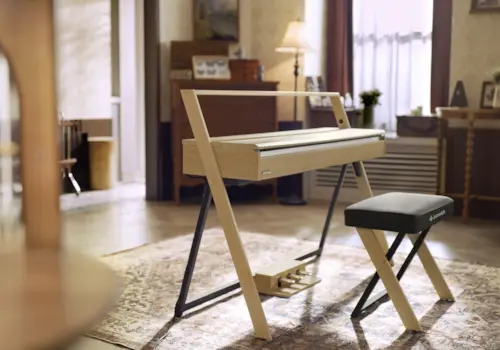Finding inspiration in other areas of life is vital for all pupils, says Kathryn Page, who suggests some lifestyle mentoring to get things going
When a parent asks me how much practising their child should hope to do each day, nowadays I unhesitatingly reply ‘24/7, 365 days a year!’ This is not sarcastic humour, but in fact a very important starting point for a long conversation: Progress as a pianist depends as much on what you do when you are not practising as when you are. Literally everything you do in life has a direct effect on your development as a pianist. If you eat nothing but junk food, are sleep deprived and watch violent movies regularly, it is fair to say your focus at the instrument will not be as acute as it would be if you regularly managed eight hours of slumber, daily consumed ‘five a day’ of fruit along with lots of salad, protein and veg, and managed carefully what you read, watch and listen to in your leisure hours.
How to keep your students inspired away from the piano

©Pexels
So, the piano teacher has a responsibility not only to develop excellent technical and musical skills in their protégés, but also to encourage and inspire an approach to life that is healthy, cultured and spiritually enlightened. I will never forget the late Jean Harvey, chief examiner for ABRSM for many years, when she reminisced about one particularly memorable lesson with her beloved teacher Myra Hess: ‘When I arrived for my lesson at the normal time she informed me that today’s lesson would consist of a walk around the National Gallery! Later as we walked around looking at the pictures, Dame Myra asked me questions about many of the paintings we saw. She opened my eyes to wonders that I previously could never have guessed at’.
Though it probably isn’t practical for us all to divert many lessons via public galleries, museums, theatres and opera houses, the 21st-century piano teacher has the internet and YouTube in particular as a fantastic resource to stimulate curiosity and ultimately love of culture for all of our pupils.
Try giving email links for articles and performances to your pupils regularly. Write down suggestions for films relating to music that is being studied, so that your students broaden their horizons and realise that the black dots and lines on the page are only the beginning of the story, only part of the broader picture.

©Unsplash. Kathryn Page suggests encouraging your students to attend orchestral and chamber concerts
With younger pianists, it makes a lot of sense to involve parents in the quest for pianistic progress via a positive engagement with art and culture beyond the piano’s keyboard. This need not take as much time as may be feared – a few casual comments to mums and dads about the latest West End plays, new films, novels, orchestral and chamber concerts at the beginnings or ends of lessons can make all the difference, as can a few recommendations in their lesson notebook.
Mona Lisa, anyone?

©Pexels
It can be inspirational, too, to consider what you put in your teaching room and how you decorate and present it. Rather than going for bare walls, why not have a miniature art gallery all round the piano? Nowadays it is relatively easy to obtain reproductions of prints, and I recommend having different ‘seasons’ on your teaching room walls, so that you alternate your own favourite pictures, term by term. Ask your pupils to focus on a particular image on the wall and ask lots of questions: What feelings come out of the picture? What strikes you the most about what you see? You can then get into more ‘left-brained’ considerations about the colours used and perspective before zoning in on one or more of the pieces in the pupil’s current repertoire and asking the same questions.
And I strongly recommend that you have a scattering of inspirational novels strategically placed around your piano so that pupils can notice them! Consider the age of your pupils and aim to have half a dozen books that are appropriate for them ready to take out before they come into the room. We want our students to make up their own stories to go with the pieces they are playing. To encourage this, it makes sense for them to read fiction regularly for pleasure and stimulation.
Space forbids more than a cursory mention of some of the other art forms and possibilities for exploration that we piano teachers can move our pupils towards. In previous issues in this column, the importance of singing and dancing has been stressed, and reference to wonderful performers in opera and ballet will certainly reinforce the ongoing vocalisation and physical movements that are always extremely useful for pianists of all levels to experiment with. I cannot emphasise enough how vital it is for repertoire to always be considered, internalised and felt away from the piano: to limit oneself to studying our music solely whilst sitting down exclusively via our ten fingers only is to lose sight of the music we play in its wider sense.
We want our pupils to view the piano as a proverbial vehicle for exploration, a means towards inspiration, enlightenment and enrichment. Let’s encourage them to connect their piano playing with everything else in their busy lives.
In every issue of Pianist, Kathryn Page hosts the Piano Teacher Help Desk. Download our latest issue to read her most recent submission.
Main image: ©Unsplash







